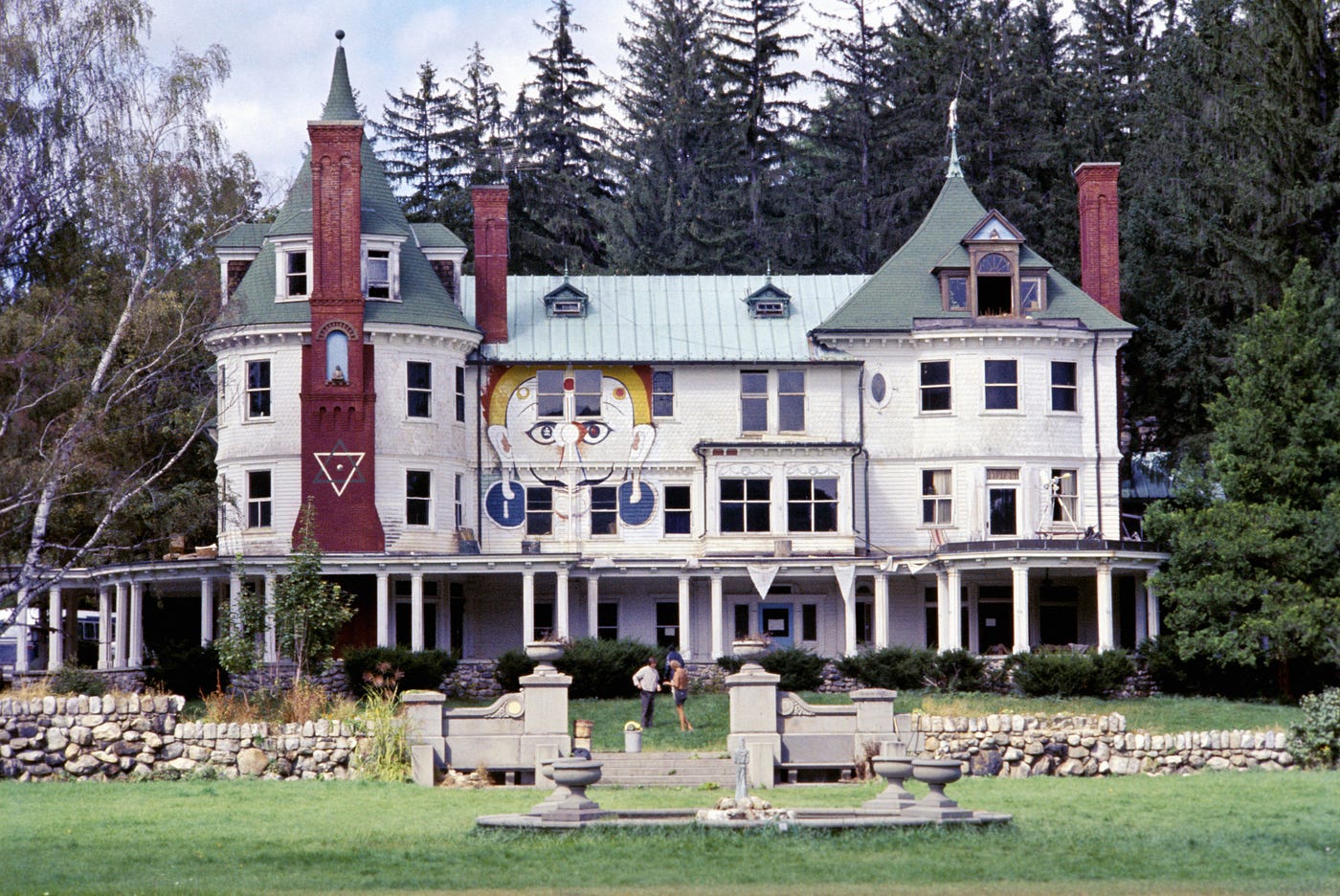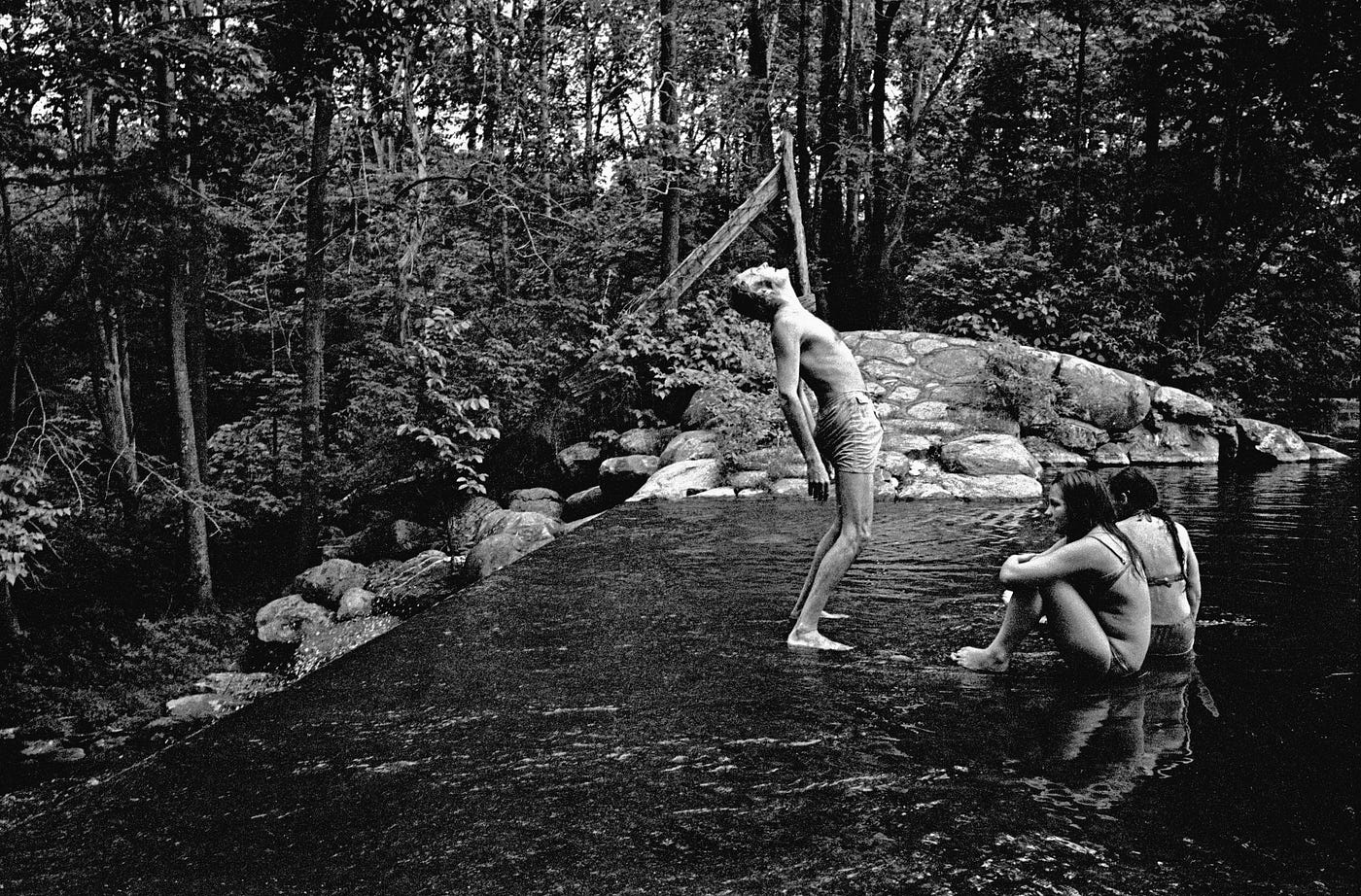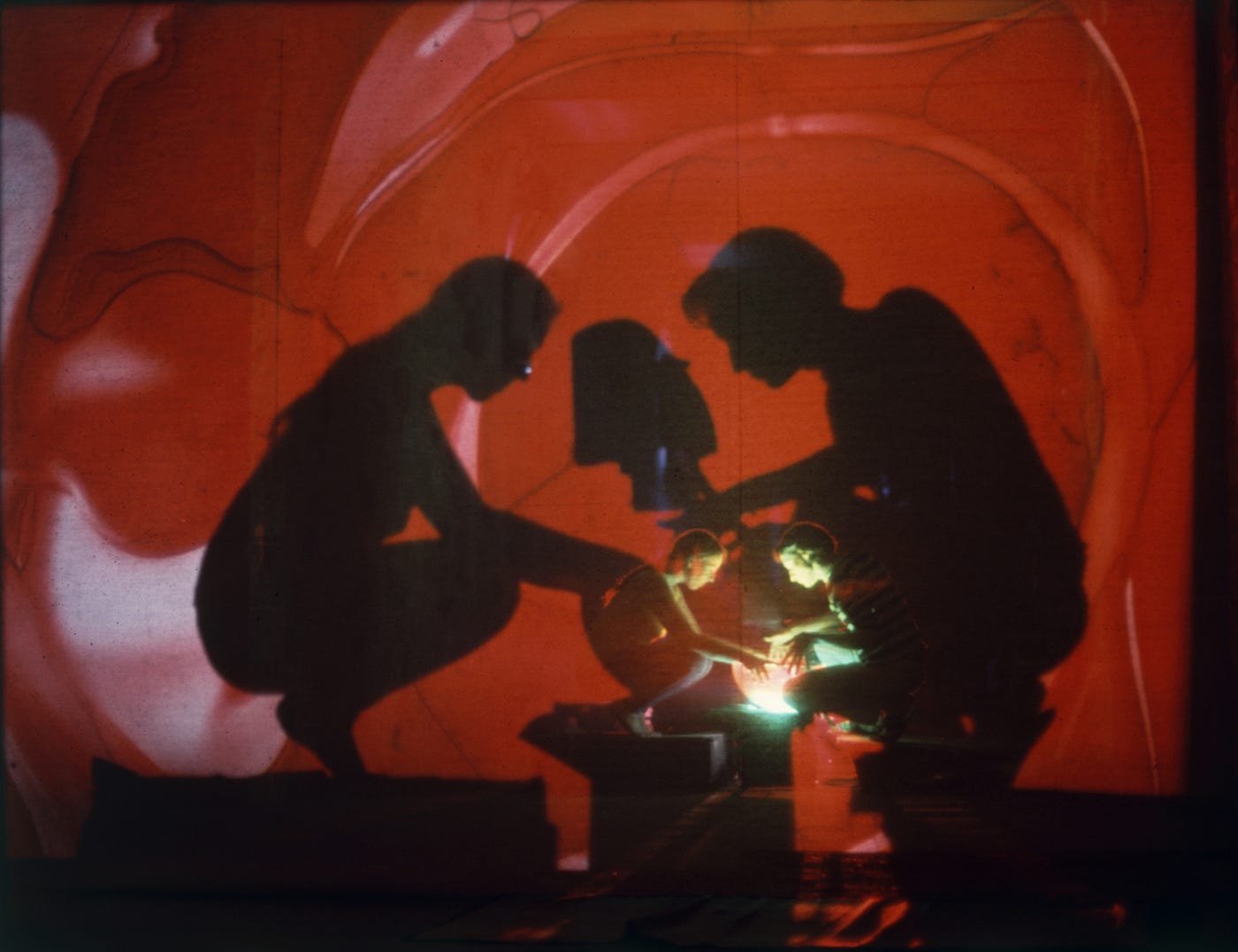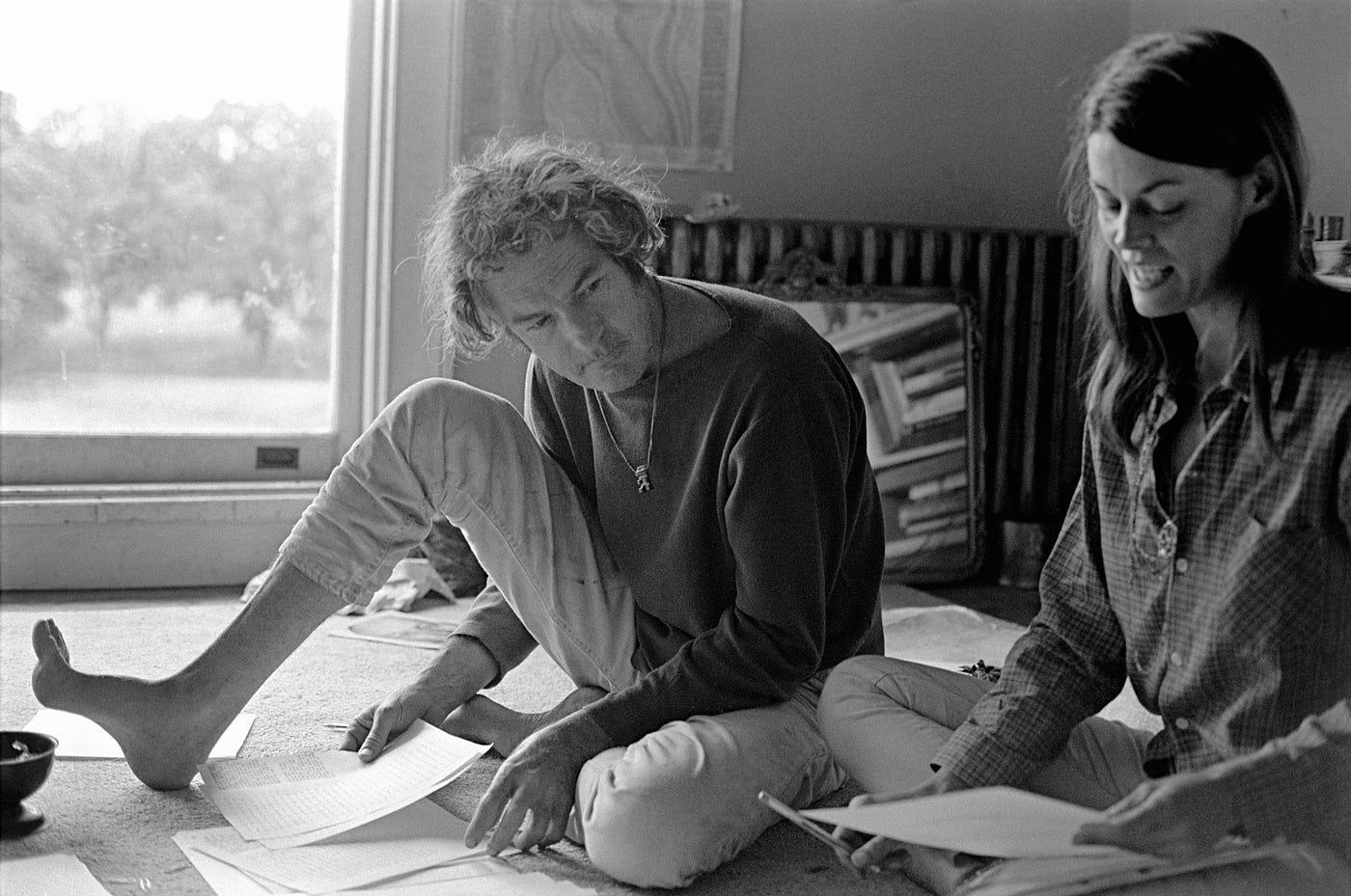The Best House Party 1960s in Upstate Ny
This magical drug mansion in Upstate New York is where the psychedelic '60s took off
Owned by ane of America's richest families, Millbrook hosted Timothy Leary, Allen Ginsberg, Charles Mingus and more
![]()

Westwardilliam Mellon Hitchcock was not your typical acid head.
Baton, as he was called, was a tall, mannerly blonde stockbroker in his twenties who worked at Lehman Brothers, for i. He was heir to one of the largest fortunes in the land, for some other. And he had a trust fund that lined his pockets with $xv,000 a calendar week to do what he pleased. Sometimes he played the stocks. Sometimes he dropped acid. In Jan of 1963, Billy thought information technology'd exist a smart investment to spend half a million dollars on ii,500 acres of land 2 hours north of New York City on the outskirts of the sleepy hamlet of Millbrook.
German-born gas magnate Charles F. Dieterich bought the land from a Ceremonious State of war widow in the 1880s, and turned the farm into a game preserve where on the weekends politicians like Governor Nelson Rockefeller hunted deer, pheasants and rabbits. The crown jewel of Daheim, as the estate was then known, was a 64-room Bavarian baroque mansion and gatehouse. After Dieterich'southward death in 1927, the estate had passed to William Teagle, president of Standard Oil. By the fourth dimension Billy Hitchcock bought the farm in 1963, the manor had fallen into disrepair, the dilapidated mansion an afterthought. That is, until Peggy Hitchcock, his impossibly hip 28-year-old sister who turned him onto acid, asked him for a favor.
Drs. Timothy Leary and Richard Alpert, the partners in criminal offence behind the sick-fated Harvard Psilocybin Project, were in bad shape in the summer of 1963 as the Daheim estate sale was beingness finalized. Earlier that spring, after giving psilocybin to an undergraduate, Alpert became the first Harvard professor in the twentieth century to get fired. ("Some mean solar day it will be quite humorous," Alpert said, "that a professor was fired for supplying a educatee with 'the nigh profound educational experience in my life.' That'due south what he told the Dean it was.") Leary's ouster followed days later, for the far tamer reason of failing to bear witness up to teach his scheduled classes.
Leary claimed he knew it was coming from the moment he first tried LSD dorsum in September of 1961. "From the date of this session," he said, "it was inevitable that we would leave Harvard, that we would leave American club and that we would spend the residuum of our lives every bit mutants, faithfully post-obit the instructions of our internal blueprints, and tenderly, gently disregarding the parochial social inanities."
Their internal blueprints led them to kickoff to Zihuatanejo, Mexico, then to the island of Antigua, and finally back to Cambridge, $50,000 in debt.
But and so along came Peggy Hitchcock, who Leary introduced to LSD the yr earlier and with whom he had a brief affair. In his autobiography, Timothy Leary wrote:
"Peggy Hitchcock was an international jet-setter, renowned every bit the colorful patroness of the livelier arts and confidante of jazz musicians, race automobile drivers, writers, movie stars. Stylish, with a wry humour, Peggy was considered the most innovative and creative of the Andrew Mellon family unit. Peggy was easily bored, intellectually ambitious, and looking for a project capable of absorbing her whirlwind energy. And that was us."
She asked her brother Billy if anyone was staying at the boarded up mansion at his recently purchased cattle ranch. "He said no," she recalled. "And then Richard Alpert and I went up and looked and we thought it was great. The rent was a dollar a year."
In September of 1963, Alpert, Leary, and Ralph Metzner (their colleague at Harvard) moved in, forth with thirty or and so of their followers. In a Poughkeepsie Periodical commodity headlined "Scientists Plan No Experiments at Millbrook," Alpert assured the reporter that their drug days were over. The plan was to "write extensively" and "live quietly."
Standing on the grounds of the cattle ranch, with the waterfalls, meadows, rolling hills dotted with cows, and a rambling Bavarian castle with turrets that looked straight out of a medieval psychedelic fantasy, it's a wonder the reporter failed to aroma the bullshit.

Though it would exist some 30 years earlier R. Kelly's "I Believe I Can Fly" hit the radio waves, one can almost hear its faint strings in the groundwork as Dr. Richard Alpert leapt all slow motion-like from a 2nd story window of the Millbrook mansion and tested that ill-conceived notion that would soon come to haunt parents the country over any time those three dreaded messages L-S-D were mentioned. Alas, Alpert did not fly. He broke his leg.
Just another day at Millbrook.
The mansion now renovated and replete with the requisite Persian rugs, pillows, mattresses and psychedelic art, its residents could trip with reckless abandon. Information technology was, equally Martin A. Lee and Bruce Shlain put it in Acid Dreams (1985), quite the scene:
"In that location were large aquariums with unusual fish, while other animals, dogs, cats, goats, wandered freely through the house. People stayed up all dark tripping and prancing around the estate. (A stash of liquid acid had spilled in Richard Alpert's suitcase, soaking his underwear, when the psychedelic fraternity was traveling back from Zihuatanejo, so anyone could become loftier merely by sucking on his briefs.) Everyone was always either only coming downwardly from a trip or planning to take one. Some dropped acrid for ten days straight, increasing the dosage and mixing in other drugs. Even the children and dogs were said to take taken LSD."
Along with the residents came a rotating cast of celebrities, thinkers and artists. Jazz musicians like Charles Mingus and Maynard Ferguson tested their improvisational skills while playing bass and trumpet high on the roof. Allen Ginsberg and his lover Peter Orlovsky frolicked nude on the grounds. Members of Warhol'due south factory drove up when they needed a pause from the amphetamine velocity of NYC living. Psychologists both pop and proper, such as Alan Watts, Humphrey Osmond and R.D. Laing, debated theory as Billy Hitchcock talked business organization with Swiss bankers on the phone.
Ah aye, Baton. Ever in the groundwork at Millbrook, never quite front end and center, never quite plumbing fixtures in, but always around. Billy failed to see whatsoever contradictions between his worldly and psychedelic pursuits. Some at Millbrook felt he just didn't get it, hadn't quite cleaved through to the other side. Others suspected his intentions. Why, later all, would an entrenched member of the establishment be so eager to support those seeking to tear it downwardly? But there were tender moments. During one trip, an agitated Billy had to exist assured that the estate was really his. At the starting time of one group trip where participants went around in a circle stating their questions they hoped to have answered and their intentions for the session, Hitchcock asked: "How tin I make more than money on the stock marketplace?" Not your typical acid head, indeed.

But this experiment in mystical living wasn't simply an endless party. The ringleaders were nevertheless academics at eye — plunged deep into uncharted intellectual terrain, to be certain, but compelled nonetheless to map that terrain every bit all-time they could.
Leary, Alpert and Metzner were looking for insight into the ultimate nature of reality, to systematize and program the psychedelic experience to reach that place of insight consistently. To that end, Leary, Alpert and Metzner published the journal The Psychedelic Review, held workshops on psychedelics twice a month that were decidedly more sober than the normal shenanigans, and wrote The Psychedelic Experience (1964), a trip manual based on the Tibetan Book of the Dead. (John Lennon, who first took LSD in 1965 subsequently a dentist dosed him and within weeks was dropping acid daily, would compose the revolutionary track "Tomorrow Never Knows" based on passages from The Psychedelic Experience).
But equally the months passed, Millbrook started to lose its scientific bearings, the scene growing wilder and wilder as discussion got out to colleges dotting the E Coast. Residents of Dutchess Canton grew ever more suspicious. Students at the nearby all women'due south Bennett Higher were shown close-ups of Leary at the get-go of each term, with administrators warning them that fraternizing with this man would mean instant expulsion. For Leary and his followers, the Buddhist insight that catches agree past nearly the fifth acid trip that nothing, fifty-fifty the magical paradise of Millbrook, could last forever, turned into creeping fears of an imminent bust.

Those fears were realized at around 2am on Sunday, April 17, 1966, when the newly-appointed banana commune attorney G. Gordon Liddy — aye, that G. Gordon Liddy — led a nighttime raid on the Millbrook manor, search warrant in hand, a climax to months of surveillance.
Liddy and 22 officers disrepair down the primary door without knocking, even though, like all doors on the holding, it was never locked. They constitute 29 adults and 12 children, most of them asleep. Searching the premises, officers found a small-scale corporeality of cannabis, but no acid or other drugs. They confiscated Leary's son'south high school chemistry set. Women were strip searched and asked whether they "had intercourse" on the premises.
Leary came down the stairs from his bedroom wearing naught merely a t-shirt, arguing with Liddy that his constitutional rights were being violated every bit officers failed repeatedly to convince him to put on pants. He was arrested along with three others. In a newspaper account the side by side day, Sheriff Quinlan described the mansion's interior every bit grotesque. "There were weird paintings on the walls and some exotic statues," he said. "At that place were candles all over the identify and the business firm merely reeked with incense."
The dream was over. From that point onward, Millbrook was nether constant surveillance. Constabulary set up roadblocks around the bounds, and anyone who wanted to enter the estate had to exist strip searched. Many of the OG regulars departed the scene, replaced by strung out youngsters getting into harder drugs, like methamphetamine. Leary was a sporadic presence, spending more and more time in California. John Perry Barlow, a regular at Millbrook during its final days who'd afterward write lyrics for the Grateful Dead, co-plant the Electronic Frontier Foundation, and write the famed Declaration of Independence of Net manifesto, said Leary and others had "found Dr. Alpert's manias so alarming they'd sent him packing off to India." Alpert would return in 1969 bearded, wearing a dhoti and calling himself Ram Dass, crystallizing his learnings from Republic of india with the 1971 countercultural archetype Be Hither Now, which inspired an obsessed Steve Jobs to wander Alpert's path in Republic of india in search of his guru.
The scene at Millbrook ultimately complanate just as LSD went mainstream. Leary, Ginsberg and other Millbrook regulars led the Human Be-In in Golden Gate Park in January 1967, with Haight-Ashbury in full swing. The Beatles were taking acid, and everybody knew it. California Governor Reagan decried the demon drug of LSD, and soon-to-be President Richard Nixon called Timothy Leary the nigh unsafe man in America.
Need for acid was loftier, and Billy Hitchcock, enterprising every bit ever, sensed an opportunity. He introduced Nicholas Sand, a Millbrook regular and aspiring underground chemist, to Tim Scully, a whizz kid chemist from Berkeley newly-arrived on the estate. With Hitchcock bankrolling the performance, the ii chemists moved to California, set up upwards a lab, and synthesized 3.6 one thousand thousand hits of Orange Sunshine — 250 micrograms of pure LSD bliss that hit the San Francisco streets right on fourth dimension for the Summer of Dear. Hitchcock soon followed his latest venture to the Bay Surface area, but not before evicting everybody from the estate he was now certain was his.
It was the stop of things at Millbrook, and the beginning of the psychedelic 1960s for everybody else.
At Timeline, we reveal the forces that shaped America'southward by and present. Our team and the Timeline customs are scouring archives for the most visually arresting and socially important stories, and using them to explain how we got to now. To help u.s.a. tell more stories, please consider condign a Timeline member .
Source: https://timeline.com/drug-mansion-psychedelic-60s-5116867d5041
0 Response to "The Best House Party 1960s in Upstate Ny"
Post a Comment